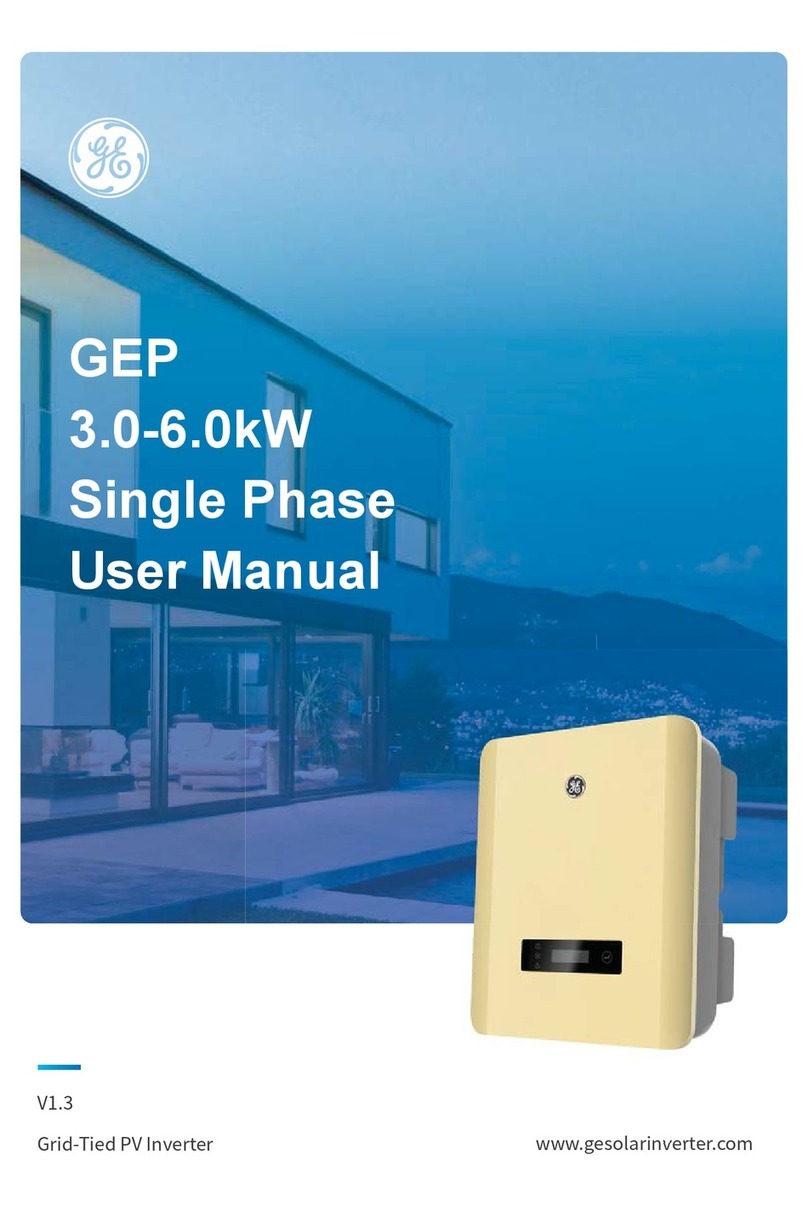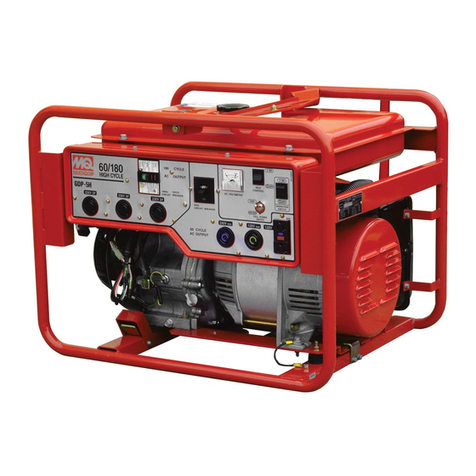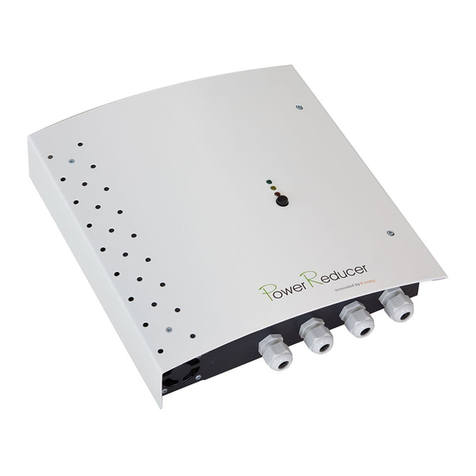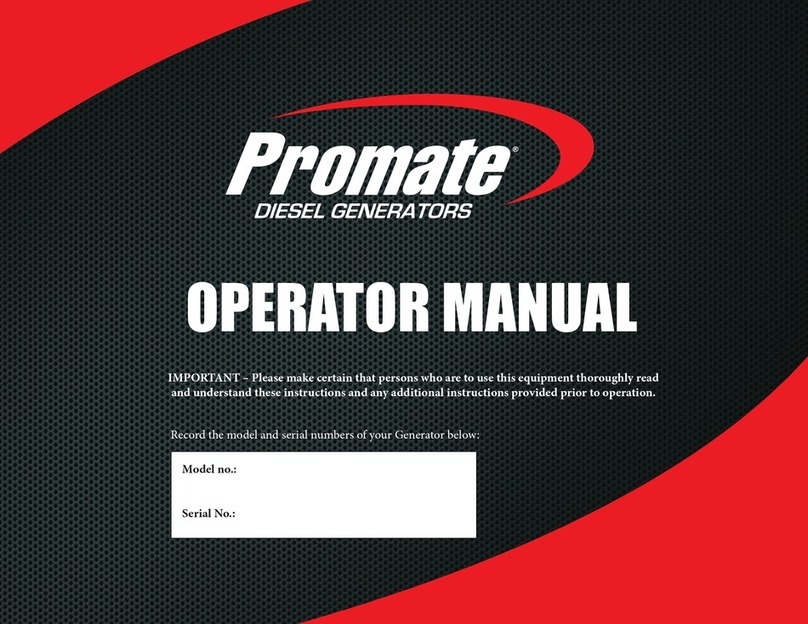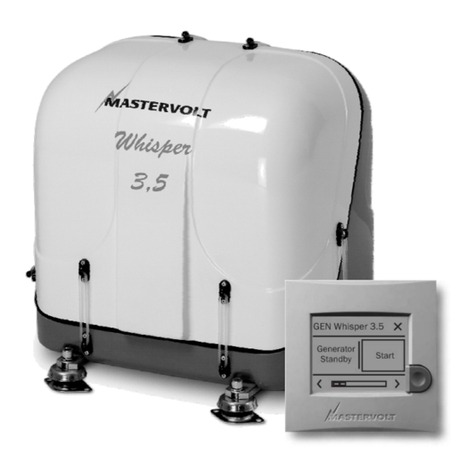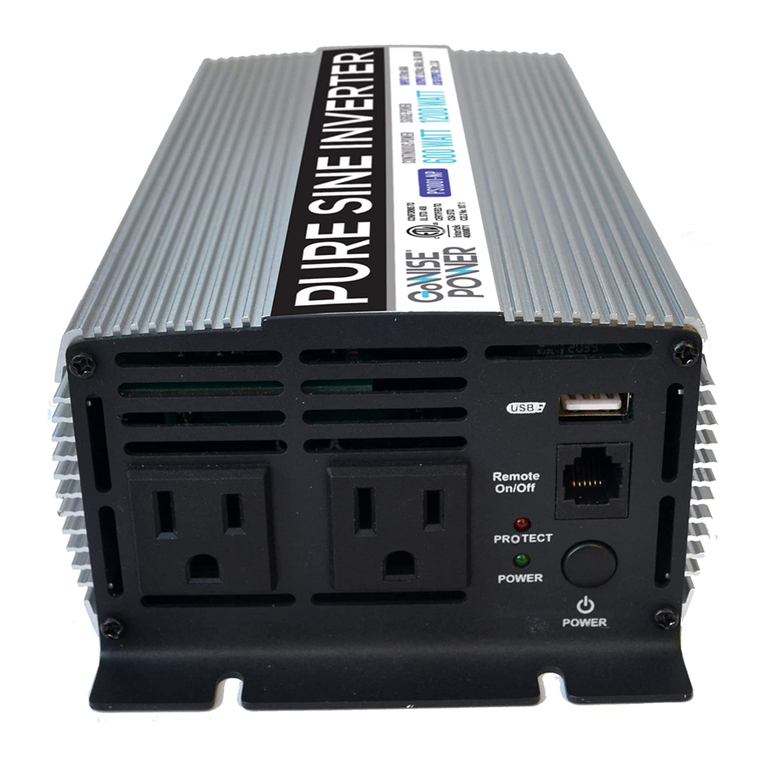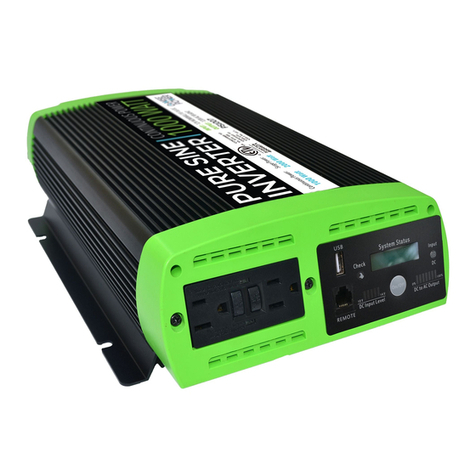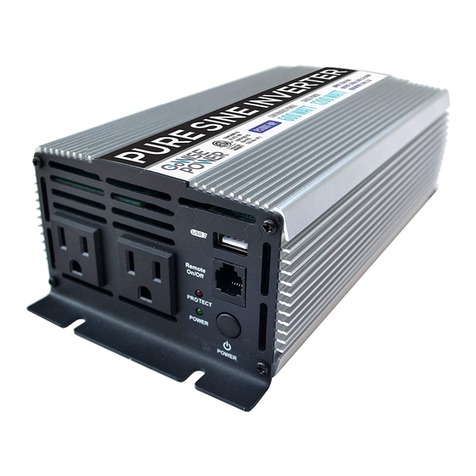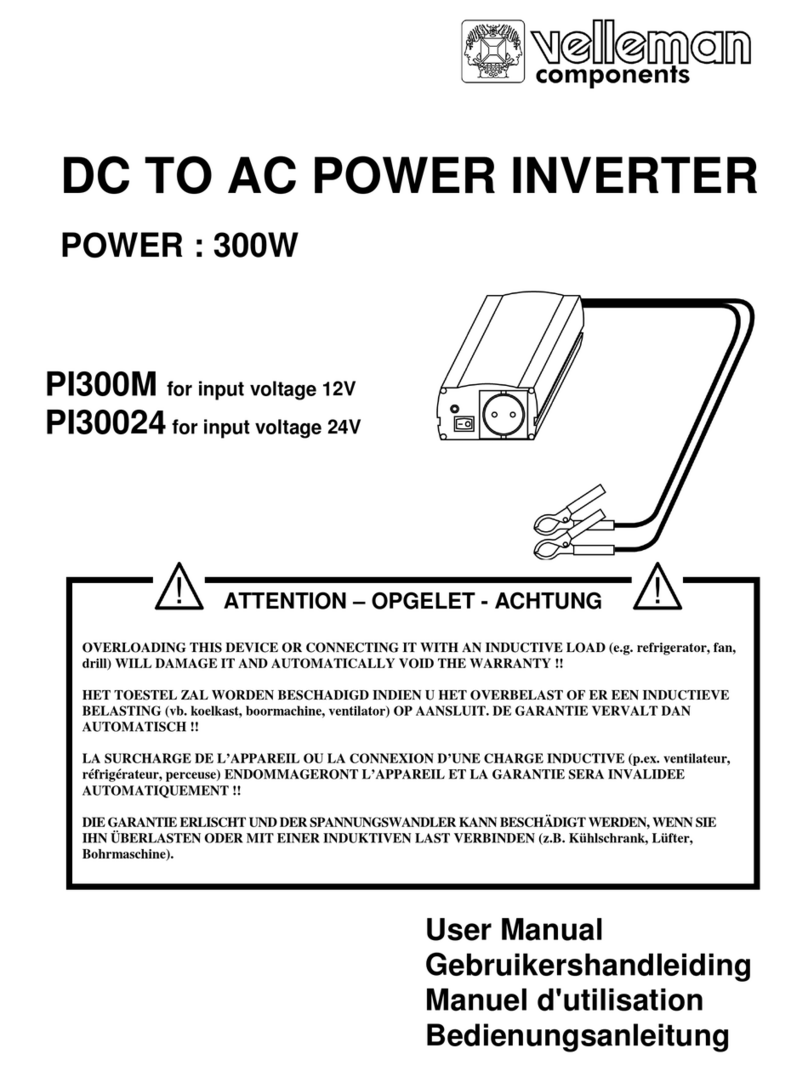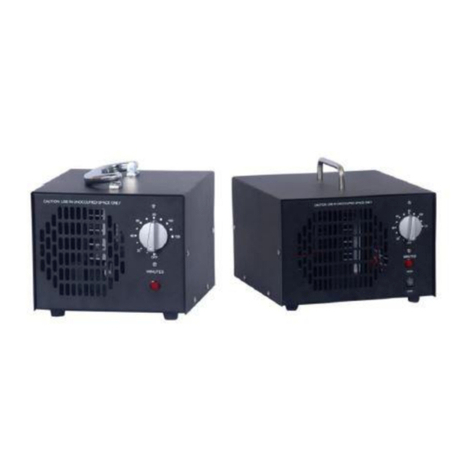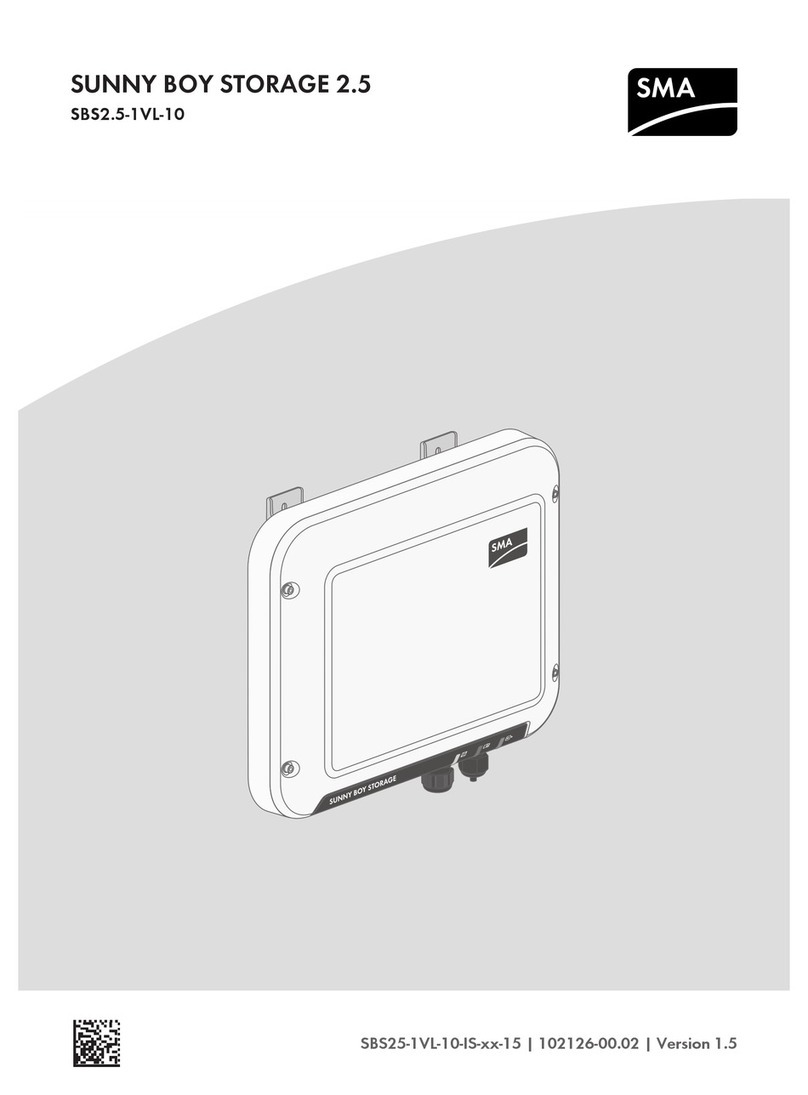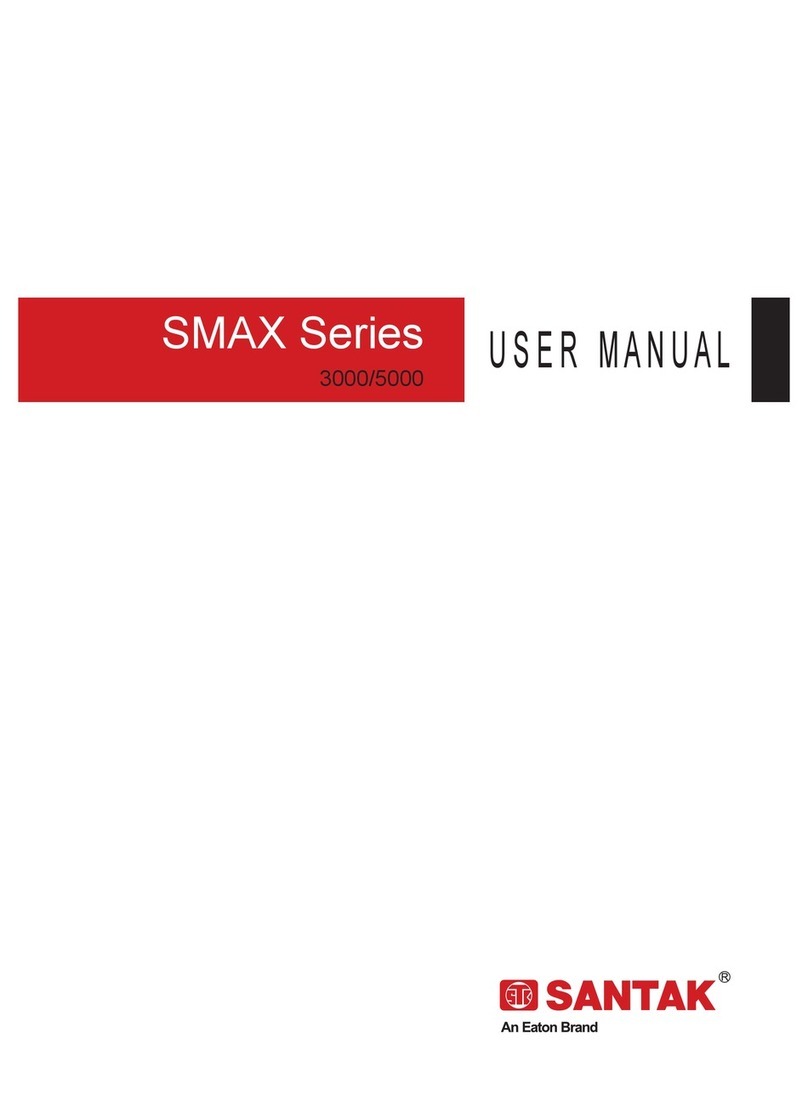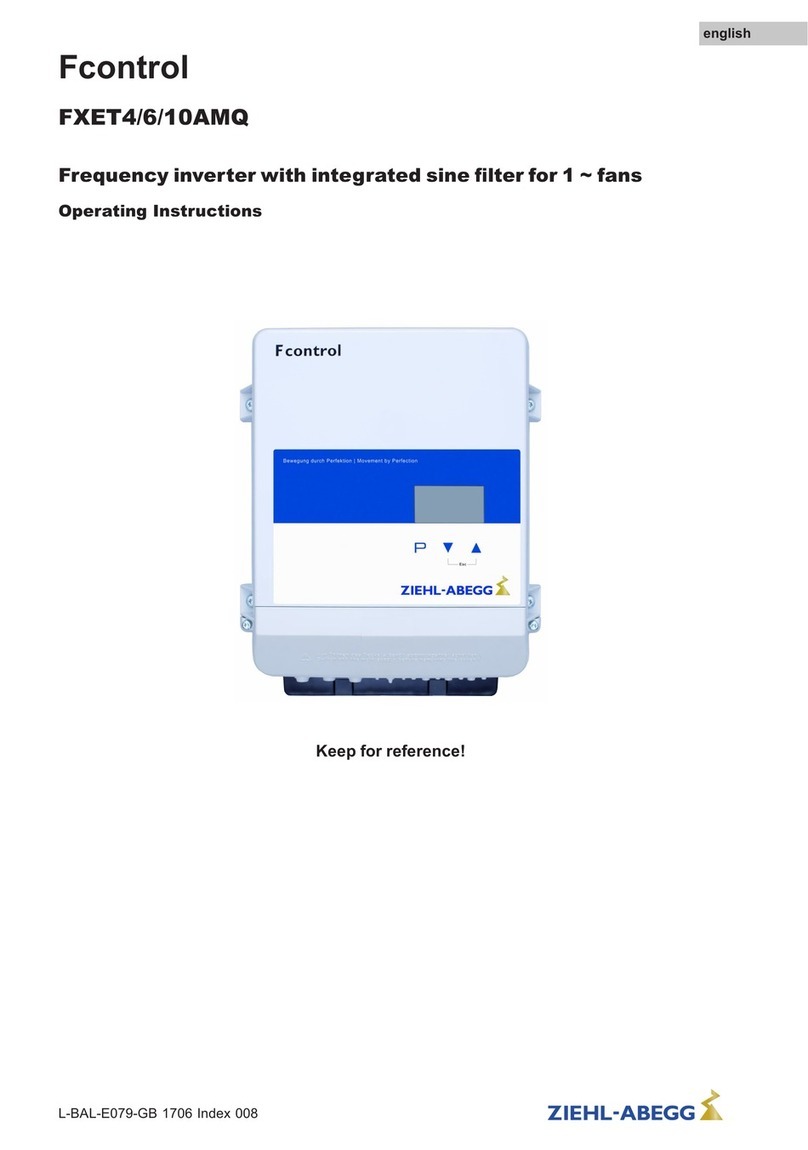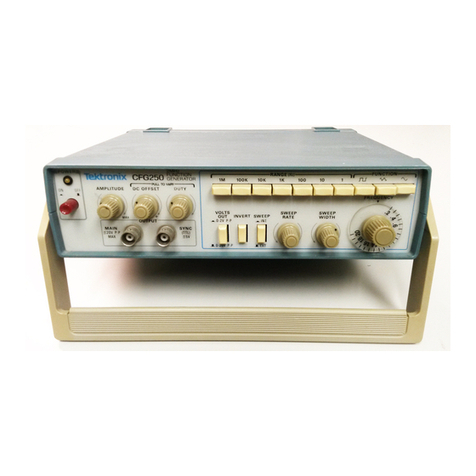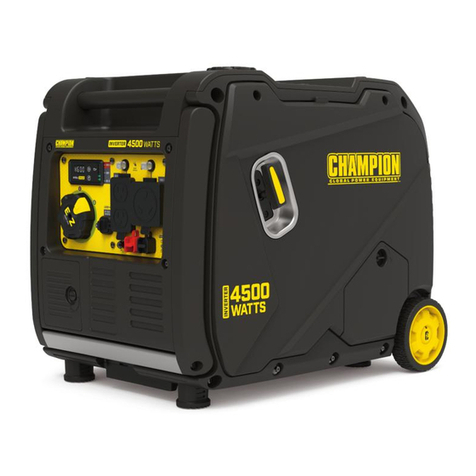
GENERAL SAFETY INSTRUCTIONS
SAFETY INSTRUCTIONS
7
IMPORTANT: READ AND SAVE THESE INSTRUCTIONS!
This user manual contains important safety instructions for the GoWISE Power
Pure Sine Wave Inverters that must be adhered to during installation, operation
and troubleshooting. Read and save this user manual for future reference.
Read these instructions carefully and become visually familiar with the
equipment before installation, operation, servicing, or maintenance. The
following precautionary messages may appear throughout this manual or
equipment to warn of potential hazards or to call attention to information that
clarifies or simplifies a procedure.
Before installing and using your new inverter, read all appropriate sections of
this guide and any cautionary markings on the inverter, batteries and on your
appliances.
CAUTION!
•DO NOT expose this unit to rain or snow.
•Use of attachments not recommended or sold by GoWISE Power will void
warranty and may result in the risk of fire, electrical shock or personal
injury.
•To reduce the risk of electrical shock, remove connection to AC power and
DC connections prior to maintenance or cleaning. Turning off controls
WILL NOT reduce this risk.
•HELP - Someone should be within the range of your voice or close enough
to come to your aid when working with a lead-acid battery.
•DO NOT operate the inverter if the carton or unit has significant damage
from being dropped or crushed, received a direct hit of force or is otherwise
damaged.
•DO NOT dismantle the inverter. Call the factory directly when service or
repair is required. Incorrect assembly may result in risk of electrical shock or
fire. No user serviceable parts.
•As a precaution - Keep children away from the inverter and its
components! The same potentially hazardous or lethal AC power that is
found in a normal household 115 AC power outlet can be found in the power
inverter.
